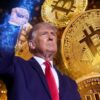Understanding Currency Pairs in Forex Trading
In the foreign exchange (forex) market, traders always buy one currency while selling another. Understanding the different types of currency pairs and their characteristics is essential for successful forex trading. In this post, we’ll explore the three main types of currency pairs—major, minor, and exotic—and discuss their unique features.
Major Currency Pairs
The major pairs are the most popular and frequently traded currency pairs. Examples include USD/EUR, USD/JPY, and USD/GBP. Major pairs are highly liquid, meaning there is a large volume of buyers and sellers. This leads to fast executions and tighter spreads (the difference between the bid and ask price). High liquidity and tight spreads make major pairs less volatile, which makes them safer and more predictable for traders.
Minor Currency Pairs
The minor pairs include currencies like EUR/GBP, EUR/JPY, and GBP/JPY. These pairs aren’t traded as often as the majors but still offer profitable opportunities. Minor pairs typically have wider spreads and higher volatility. They are more sensitive to political and economic events, which can lead to larger price swings. Traders who understand these influences can take advantage of these movements, but they also face greater risks.
Exotic Currency Pairs
The exotic pairs feature currencies like USD/ZAR (US Dollar/South African Rand), USD/TRY (US Dollar/Turkish Lira), and USD/MXN (US Dollar/Mexican Peso). These pairs are more volatile and less liquid than the major and minor pairs, which leads to larger spreads. Exotic pairs are often influenced by geopolitical and economic instability in their respective countries. This makes them more challenging to trade. However, traders who can handle this volatility may find greater profit potential.
Direct vs. Indirect Currency Pairs
It’s also important to understand the difference between direct and indirect currency pairs:
- Direct pairs: The US Dollar (USD) is the base currency. For example, in USD/EUR, you are trading the value of 1 USD against the Euro.
- Indirect pairs: The US Dollar is the counter currency. In EUR/USD, for instance, the Euro is the base currency, and you are trading the value of 1 Euro against the USD.
Conclusion
Understanding the characteristics of different currency pairs is key to successful forex trading. Major pairs are the safest and most liquid, offering tight spreads and lower volatility. Minor pairs have wider spreads and higher volatility, presenting both risks and opportunities. Exotic pairs are highly volatile with larger spreads and less liquidity, making them more challenging but potentially more rewarding for experienced traders.
When trading, consider the volatility, liquidity, and spreads of each pair, along with the political and economic factors that may influence their movements. By mastering these factors, you’ll make more informed trading decisions and improve your chances of success in the forex market.









